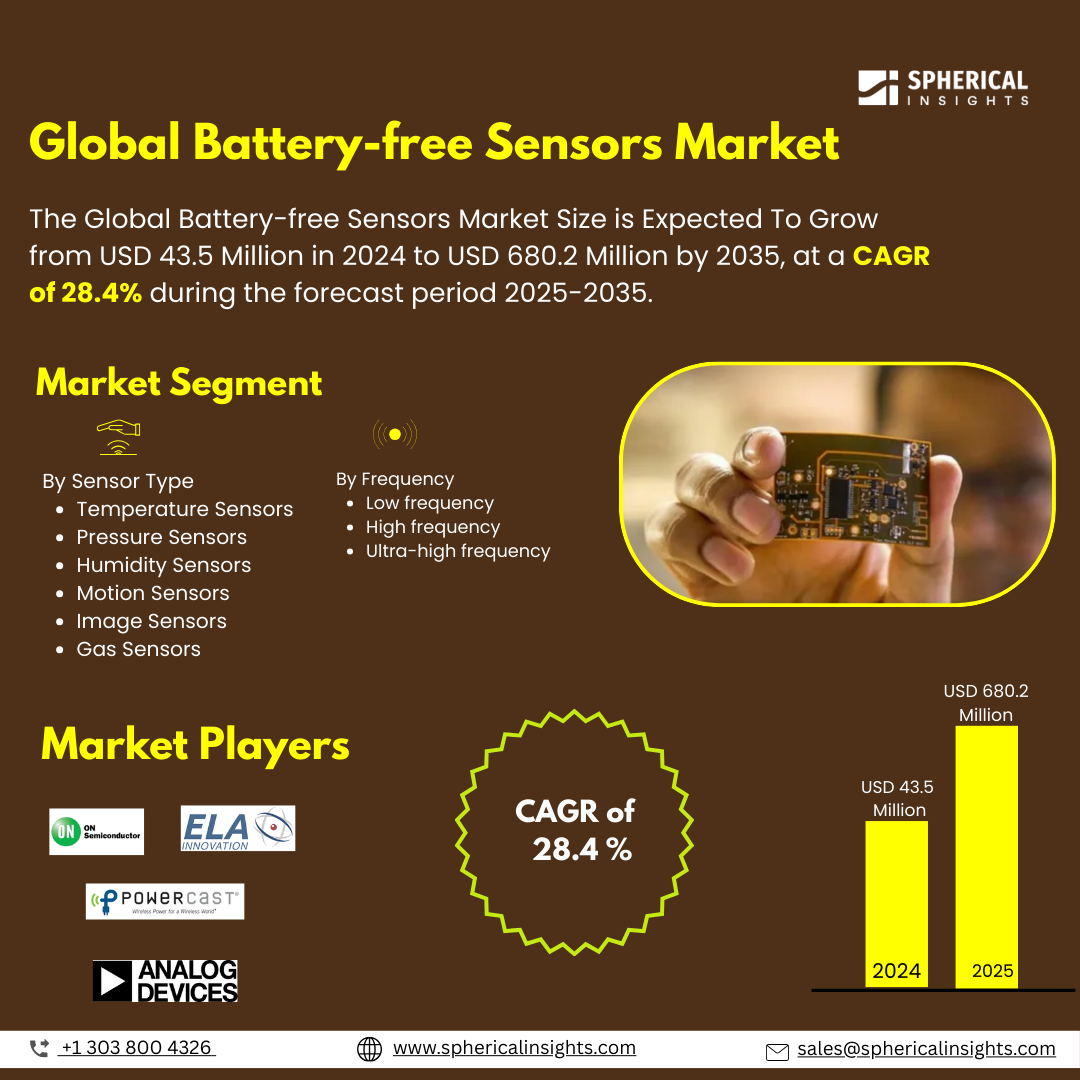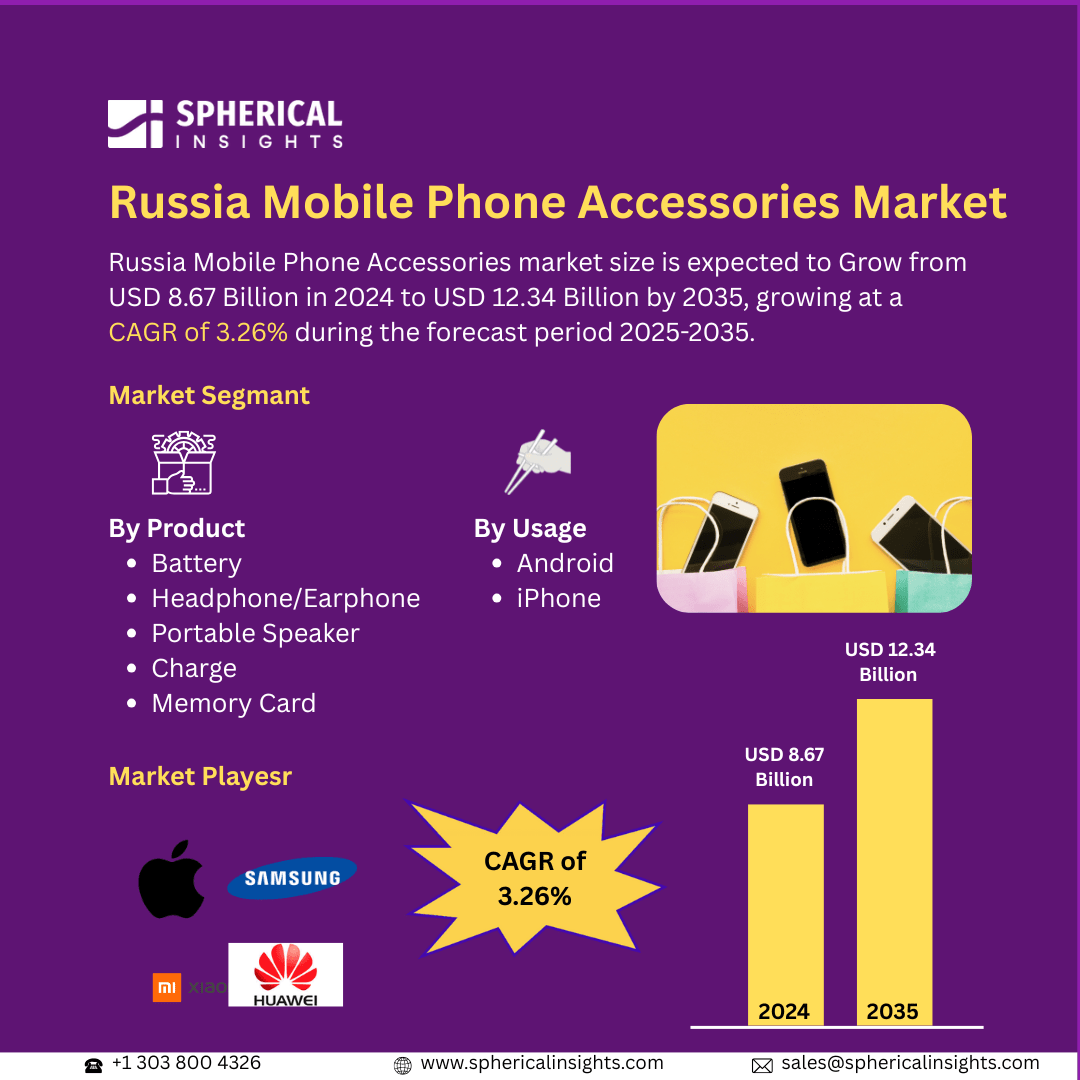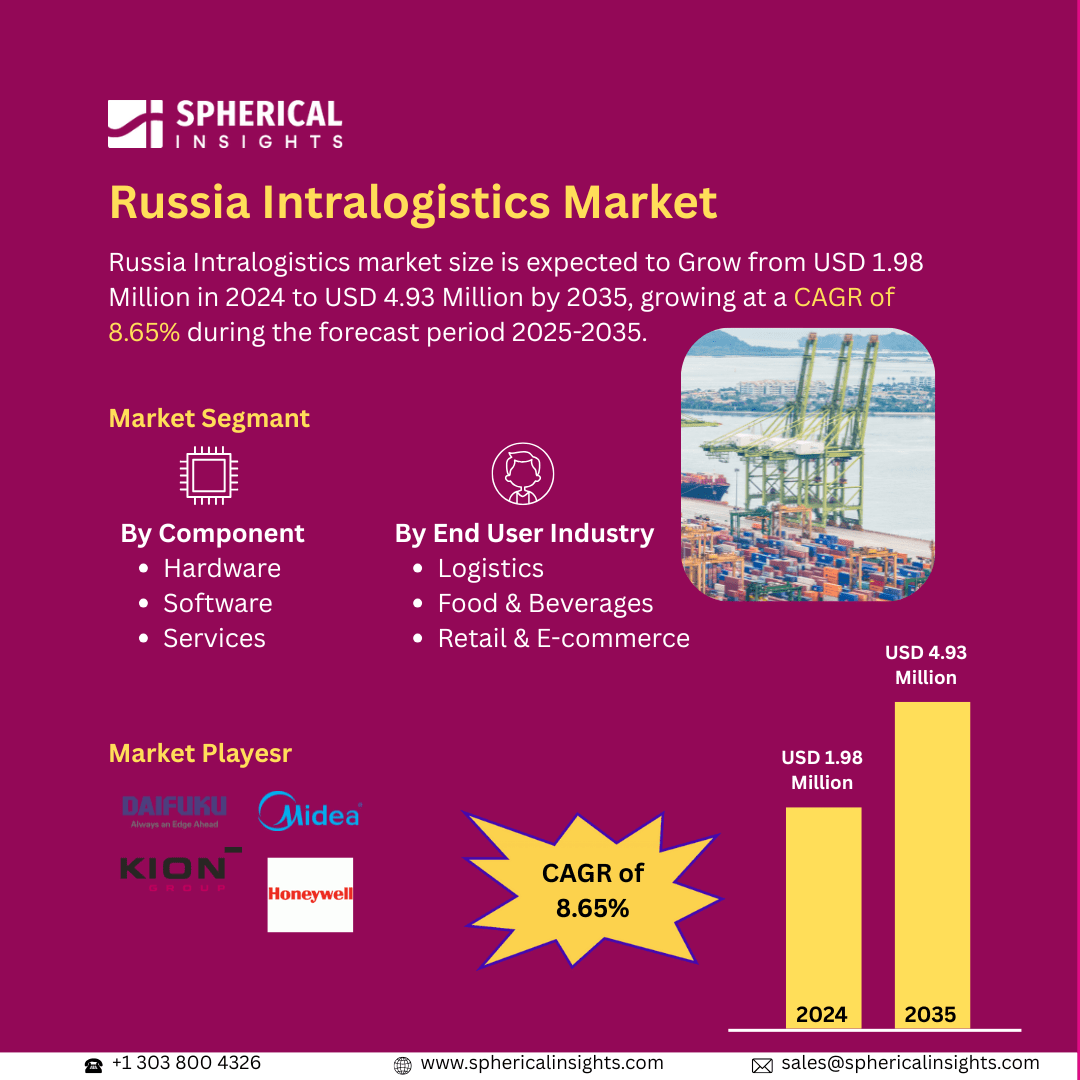Global Battery-free Sensors Market Insights Forecasts to 2035
- The Global Battery-free Sensors Market Size Was Estimated at USD 43.5 Million in 2024
- The Market Size is Expected to Grow at a CAGR of around 28.4% from 2025 to 2035
- The Worldwide Battery-free Sensors Market Size is Expected to Reach USD 680.2 Million by 2035
- Asia Pacific is expected to grow the fastest during the forecast period.
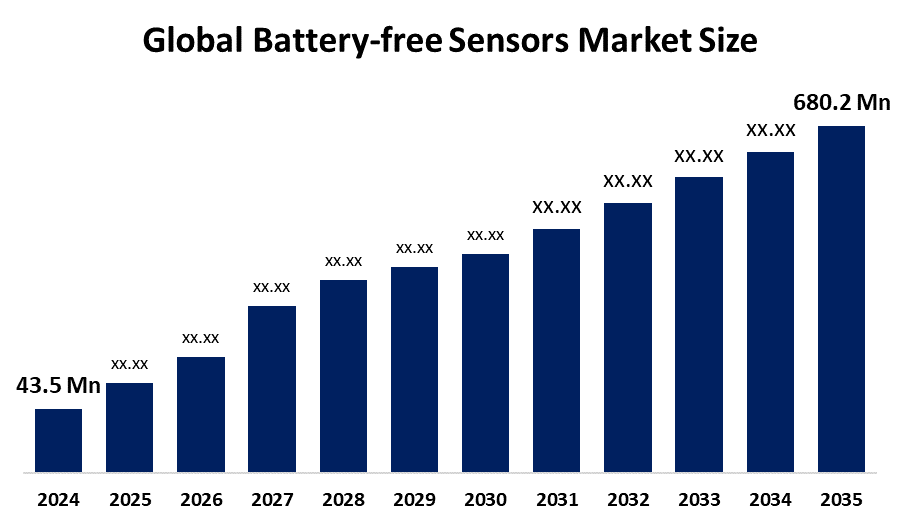
Battery-free Sensors Market
The Global Battery-Free Sensors Market Size encompasses the development and use of sensors that function without traditional batteries by harvesting energy from their surroundings, such as light, heat, or radio waves. These sensors are designed to operate autonomously, eliminating the need for regular battery replacements and reducing maintenance efforts. Battery-free sensors are widely utilized in various sectors including industrial automation, healthcare, agriculture, smart homes, and environmental monitoring. Their ability to provide continuous and reliable data collection makes them ideal for applications requiring long-term deployment in remote or difficult-to-access locations. Technological advancements in low-power electronics and energy harvesting methods have improved the efficiency and functionality of these sensors. As a result, battery-free sensors contribute to more sustainable and cost-effective monitoring solutions, enabling smarter systems and better decision-making through real-time data. This market is progressively shaping the future of sensor technology by combining innovation with eco-friendly operation.
Attractive Opportunities in the Battery-free Sensors Market
- Combining multiple energy sources such as solar, thermal, and RF can significantly improve the reliability and efficiency of battery-free sensors. This hybrid approach expands the sensors' usability across variable environments and applications where a single energy source may not be sufficient.
- Battery-free sensors are ideally suited for wearable health trackers and implantable medical devices, where long-term, maintenance-free operation is critical. The demand for real-time health monitoring, especially in aging populations and chronic disease management, presents a high-growth opportunity.
- As smart city initiatives expand globally, there’s rising demand for low-maintenance sensors to monitor infrastructure, traffic, air quality, and public utilities. Battery-free sensors reduce maintenance costs and enable scalable deployment, making them attractive for municipal governments and urban planners.
Global Battery-free Sensors Market Dynamics
DRIVER: Innovations in energy harvesting methods
The rising integration of IoT ecosystems demands sensors that can function autonomously without frequent maintenance, positioning battery-free sensors as an ideal solution. Innovations in energy harvesting methods, capturing ambient energy from sources like light, heat, or electromagnetic waves have significantly enhanced sensor reliability and performance. Environmental sustainability concerns are prompting industries to adopt battery-free technologies, minimizing electronic waste and promoting eco-friendly practices. Furthermore, the need for dependable sensing in remote, hazardous, or inaccessible areas, where battery replacement is impractical, is accelerating adoption. Key sectors such as agriculture, healthcare, smart infrastructure, and industrial automation are increasingly deploying these sensors to improve data accuracy and operational efficiency. Progress in ultra-low-power electronics and advanced wireless connectivity further amplifies their usability, driving the market forward by enabling smarter, longer-lasting sensing solutions across various applications.
RESTRAINT: Limited energy that can be harvested from the environment
One major challenge is the limited energy that can be harvested from the environment, which often restricts the sensor’s power capacity and data transmission range, making them less effective for high demand applications. The upfront costs associated with developing and incorporating advanced energy harvesting technologies can be relatively high, deterring some industries from switching from traditional battery powered sensors. Additionally, issues like inconsistent energy availability due to reliance on factors such as ambient light or temperature can lead to unreliable sensor performance. Technical difficulties, including limited accuracy and durability under extreme conditions, further complicate their widespread use. Moreover, lack of universal standards and compatibility problems with existing sensor networks can hinder seamless integration. These challenges collectively slow down the broader adoption of battery free sensors, despite their promising environmental and maintenance advantages.
OPPORTUNITY: Development of hybrid energy harvesting systems that combine multiple sources
The battery free sensors market holds numerous opportunities that extend beyond common growth drivers. One key opportunity lies in the development of hybrid energy harvesting systems that combine multiple sources, such as solar and thermal, to enhance sensor reliability and broaden application scope. Emerging fields like wearable technology and implantable medical devices offer significant potential for battery free sensors due to their need for long lasting, maintenance free solutions. Additionally, expanding smart city initiatives create demand for large scale deployment of battery free sensors to monitor infrastructure, air quality, and traffic without frequent maintenance. Collaborations between sensor manufacturers and telecommunications companies can lead to improved integration with 5G networks, enabling faster and more efficient data transmission. Furthermore, advancements in materials science, such as flexible and biodegradable components, present opportunities to create environmentally friendly sensors tailored for diverse environments. These prospects open new pathways for innovation and adoption across industries.
CHALLENGES: Creating sensors that balance high sensitivity with ultra-low power use requires advanced design and materials
Maintaining stable energy harvesting amid changing environmental conditions is difficult and affects sensor reliability. Creating sensors that balance high sensitivity with ultra-low power use requires advanced design and materials. Security concerns arise as these sensors often transmit data wirelessly, raising privacy issues. Integration with existing systems is complex due to varying communication standards. Additionally, scaling up production while keeping costs low and quality high is a significant hurdle. Finally, educating users about battery free technology’s benefits and limits remains a challenge, slowing adoption. Overcoming these obstacles calls for continuous innovation and collaboration across industries.
Global Battery-free Sensors Market Ecosystem Analysis
The global battery-free sensors market ecosystem includes sensor manufacturers, energy harvesting technology providers, and component suppliers who develop low-power, sustainable sensors. System integrators embed these sensors into IoT, smart cities, healthcare, and industrial platforms. Software developers create tools for data processing and real-time analytics. Key end-users come from agriculture, manufacturing, healthcare, and environmental monitoring. Research institutions and standards organizations support innovation and interoperability. Together, these stakeholders drive the development, deployment, and adoption of battery-free sensor technology worldwide.
Based on the sensor type, the temperature sensors segment accounted for the largest market share over the forecast period
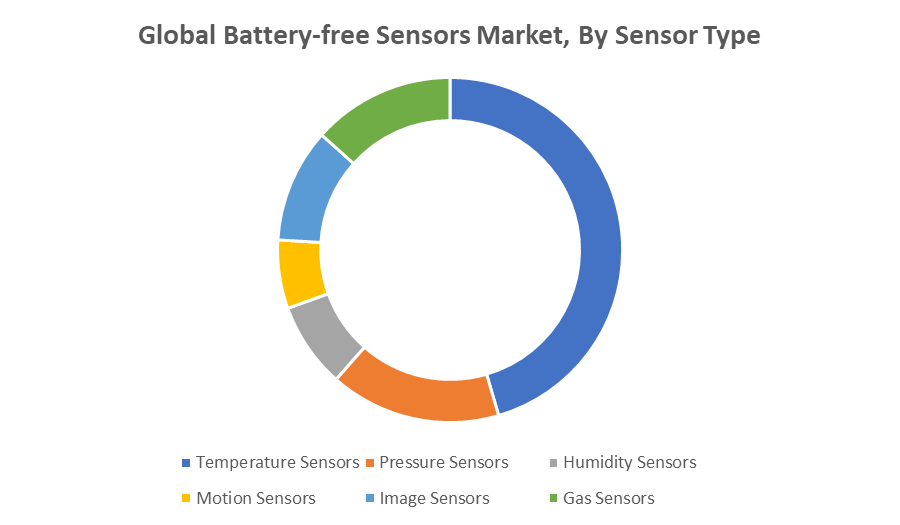
The temperature sensors segment dominance is attributed to the widespread use of temperature monitoring across various industries, including healthcare, industrial automation, automotive, and environmental monitoring. Battery-free temperature sensors are particularly valuable in remote or hard-to-access locations where continuous, maintenance-free operation is essential. Their ability to operate without batteries while delivering accurate and real-time data makes them a preferred choice, driving their market leadership.
Based on the frequency, the ultra-high frequency segment held the largest market share of the global battery-free sensors market during the forecast period
UHF sensors are widely favored for their long-range communication capabilities, fast data transmission, and compatibility with RFID and IoT applications. These features make them ideal for use in supply chain monitoring, asset tracking, and smart infrastructure. Their efficiency in transmitting data over greater distances without batteries has significantly contributed to their dominance in the market.
North America is anticipated to hold the largest market share of the battery-free sensors market during the forecast period
North America is anticipated to hold the largest market share of the battery-free sensors market during the forecast period. This growth is driven by strong adoption of advanced technologies, widespread implementation of IoT solutions, and significant investments in smart infrastructure and industrial automation. The presence of major technology players, robust research and development activities, and growing demand across sectors such as healthcare, automotive, and agriculture further support the region’s leadership. Additionally, environmental regulations encouraging sustainable and low-maintenance solutions boost market growth.
Asia Pacific is expected to grow at the fastest CAGR in the battery-free sensors market during the forecast period
Asia Pacific is expected to grow at the fastest CAGR in the battery-free sensors market during the forecast period. This rapid growth is driven by increasing industrialization, rising adoption of smart technologies, and expanding IoT infrastructure across countries like China, India, Japan, and South Korea. The region’s strong electronics manufacturing base and government initiatives promoting energy-efficient and sustainable technologies further accelerate market development. Additionally, growing demand in sectors such as healthcare, agriculture, and consumer electronics contributes to the region's fast-paced expansion.
Key Market Players
KEY PLAYERS IN THE BATTERY-FREE SENSORS MARKET INCLUDE
- ON Semiconductor
- Powercast Corporation
- Farsens
- Inductosense Ltd.
- Everactive
- Axzon
- Analog Devices, Inc.
- Infineon Technologies AG
- Texas Instruments Incorporated
- STMicroelectronics
- Others
Market Segment
This study forecasts revenue at global, regional, and country levels from 2020 to 2035. Spherical Insights has segmented the battery-free sensors market based on the below-mentioned segments:
Global Battery-free Sensors Market, By Sensor Type
- Temperature Sensors
- Pressure Sensors
- Humidity Sensors
- Motion Sensors
- Image Sensors
- Gas Sensors
Global Battery-free Sensors Market, By Frequency
- Low frequency
- High frequency
- Ultra-high frequency
Global Battery-free Sensors Market, By Regional Analysis
- North America
- Europe
- Germany
- UK
- France
- Italy
- Spain
- Russia
- Rest of Europe
- Asia Pacific
- China
- Japan
- India
- South Korea
- Australia
- Rest of Asia Pacific
- South America
- Brazil
- Argentina
- Rest of South America
- Middle East & Africa
- UAE
- Saudi Arabia
- Qatar
- South Africa
- Rest of the Middle East & Africa
